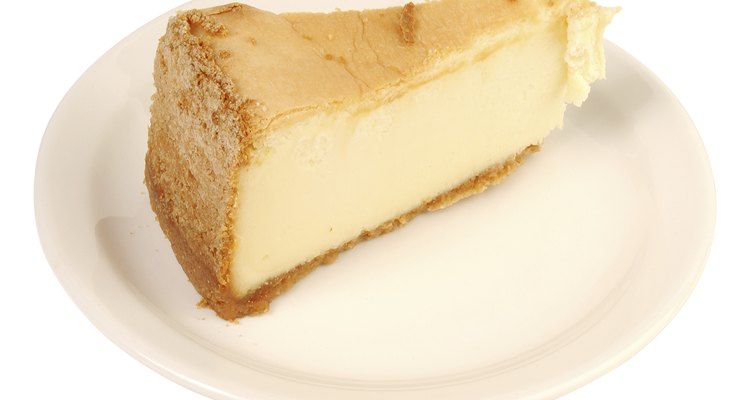
Cheesecake is a much-loved dessert, thanks to its versatility and its rich, creamy sweetness. Unfortunately, that very richness sometimes presents a problem, because a little bit of cheesecake goes a long way. Cutting a small enough portion for guests can be tricky when you've made a full-sized 10-inch cheesecake. Prepare the cheesecake in a muffin pan instead to easily provide each diner with a small individual portion.
Step 1
Prepare your favorite cheesecake recipe. Most full cheesecakes are baked in a standard 10-inch springform pan, which holds 12 cups of filling. That equals 24 muffins, using the standard large-sized muffin pan with cups 2 3/4 inches in diameter.
Step 2
Line the muffin pan with paper liners, and spray them lightly with cooking spray. This prevents them from sticking to the finished cheesecake. Divide your crumb crust evenly between the 24 cups, and press it firmly into place in the bottom of each.
Step 3
Portion your cheesecake filling into the cups, allocating about a half-cup of filling to each. Use a 4-ounce scoop or ladle to make portioning simpler.
Step 4
Slide the pans carefully into a preheated oven at 300 degrees Fahrenheit. Bake for approximately 20 minutes, until the cheesecakes are mostly set but still slightly jiggly in the middle. Remove them from the oven and let them set for eight to 10 minutes, then remove the cups from the muffin pan and place them on a rack to finish cooling.
Step 5
Cover the individual cheesecakes and refrigerate them for at least three to four hours, or preferably overnight, to become firm. Remove the paper cups before serving.
Related Articles
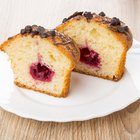
Baking Fresh Strawberries Into the ...

How to Serve Cannoli

How to Make a Guitar Out of Cupcakes

Sugar-Free Coconut Cream Pie

Can I Bake Cupcakes in Teacups?

How Long Do You Bake Brownie Cupcakes ...
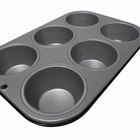
How to Cook Brownie Cupcakes Without ...
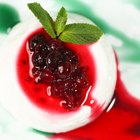
How to Cook Mini Cheesecakes in Ramekins
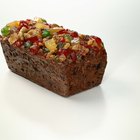
Instructions for Baking Fruit Cake in ...

Easy Strawberry Cake Recipe
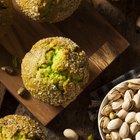
How Many Calories are in Pistachio ...

How to Make Whipped Cream Filled ...

How to Bake Custard in Ramekins

How to Make Cakes With Candy Baked ...

How to Bake Sugar Free Cheese Cake

How to Make Desserts With Filo Dough
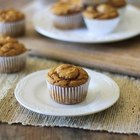
How to Make Pumpkin Muffins
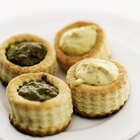
Can Puff Pastry Appetizers Be Made in ...

No Bake Blueberry Cream Cheese Pie With ...
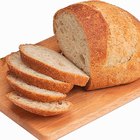
How to Make Toasted Bread Sticks With ...
References
Resources
Tips
- If you don't want your finished cheesecakes to have the distinctive rippled edges of a paper muffin cup, use a silicone muffin pan. Cool and refrigerate the cheesecakes in their pan, then run a plastic knife tip around the edge of each one to loosen it from the silicone. Unmold them carefully by pressing up on the flexible bottom of the pan.
- Pre-bake the crust for 10 to 12 minutes to give it a firm and cookie-like texture.
- Top top the cheesecakes with fruit or a glaze, simply invert the pan onto a sheet of parchment and then turn the cheesecakes right-side-up before plating and serving them.
- Full-size cheesecakes are typically baked in a water bath to keep them from cracking or over-baking. That isn't necessary with cupcake-sized cheesecakes, because they bake much more quickly.
Writer Bio
Fred Decker is a trained chef and prolific freelance writer. In previous careers, he sold insurance and mutual funds, and was a longtime retailer. He was educated at Memorial University of Newfoundland and the Northern Alberta Institute of Technology. His articles have appeared on numerous home and garden sites including GoneOutdoors, TheNest and eHow.
Photo Credits
Hemera Technologies/PhotoObjects.net/Getty Images